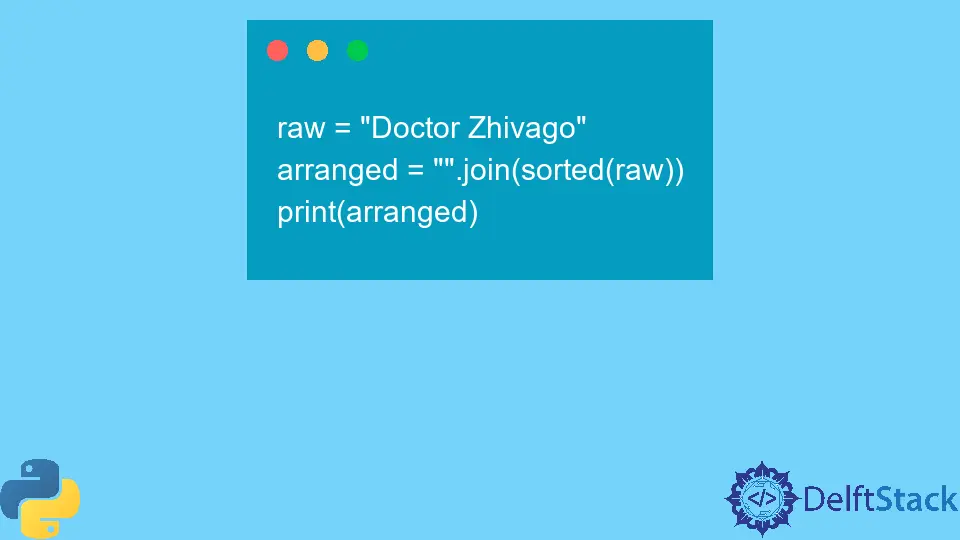Python 按字母顺序排序字符串
Muhammad Maisam Abbas
2023年1月30日

本教程将讨论在 Python 中按字母顺序对字符串进行排序的方法。
使用 Python 中的 sorted() 函数按字母顺序对字符串进行排序
Python 中的 sorted() 函数 用于按元素的值对可迭代对象进行排序。正如我们已经知道的,python 字符串是一个可迭代对象。因此,我们可以使用 sorted() 函数按字母顺序对字符串进行排序。下面的示例代码向我们展示了如何在 Python 中按字母顺序对字符串进行排序。
raw = "Doctor Zhivago"
print(sorted(raw))
输出:
[' ', 'D', 'Z', 'a', 'c', 'g', 'h', 'i', 'o', 'o', 'o', 'r', 't', 'v']
我们对 raw 字符串进行排序并在控制台上显示输出。这种方法根据元素或字符的 ASCII 值进行排序。这种方法的唯一问题是 sorted() 函数只返回一个排序字符列表。
使用 Python 中的 str.join() 函数按字母顺序对字符串进行排序
前面的方法工作正常,但该方法的唯一问题是 sorted() 函数只返回已排序字符的列表。这个问题可以通过 str.join() 函数 解决。str.join() 函数接受一个可迭代对象并将每个元素附加到调用字符串的末尾。下面的示例代码向我们展示了如何使用 Python 中的 str.join() 函数按字母顺序对字符串进行排序。
raw = "Doctor Zhivago"
arranged = "".join(sorted(raw))
print(arranged)
输出:
DZacghiooortv
我们对 raw 字符串进行排序,将结果存储在 arranged 字符串中,并将 arranged 字符串显示给用户。我们使用带有 join() 函数的空字符串将排序后的字符附加到空字符串的末尾。
Maisam is a highly skilled and motivated Data Scientist. He has over 4 years of experience with Python programming language. He loves solving complex problems and sharing his results on the internet.
LinkedIn